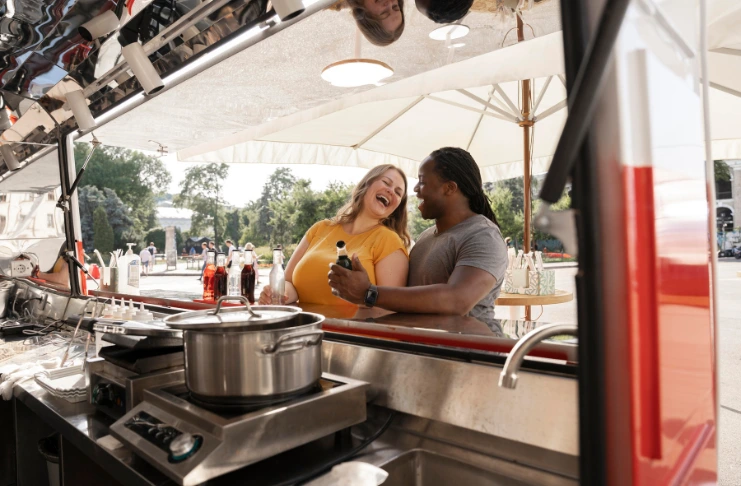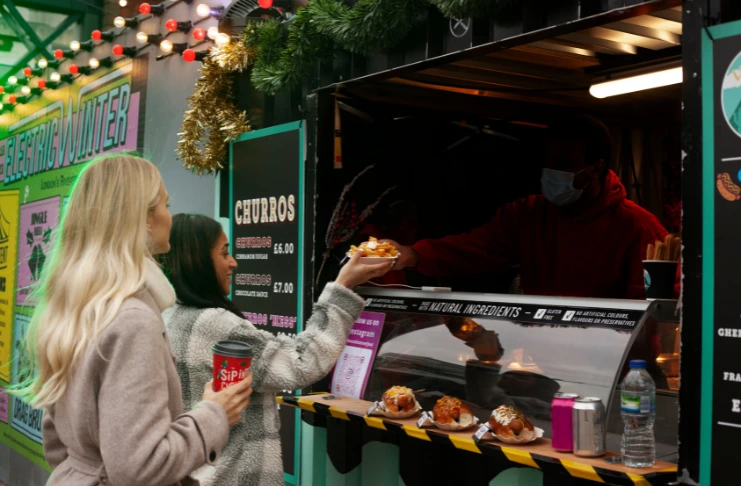Running a food truck isn’t just about serving great food—it’s also about managing startup costs, obtaining the necessary permits, consistently increasing your food truck revenue, and staying ahead in a competitive mobile dining industry. Whether you’re just starting out or looking to scale, implementing the right strategies can help you increase food truck sales and secure long-term profitability and success.
Understanding the Food Truck Market

The food truck industry has evolved from a niche trend into a booming sector of the foodservice world, influenced by industry trends offering entrepreneurs a low-overhead, high-flexibility food business model in a rapidly growing market that attracts significant investment. Conducting thorough market research and understanding this market is crucial for long-term success.
INDUSTRY INSIGHT
| The U.S. food truck industry is projected to reach $2.4 billion in revenue by 2024, growing at an annualized rate of 10.3% over five years. The growth is driven by increasing consumer demand for convenient, unique food experiences. With more food trucks expanding into catering and festivals, opportunities for profitability are also on the rise. |
How Much Can a Food Truck Make?

According to a survey, approximately 50% of food trucks reported annual revenues of $150,000 or more, with revenue averages showing that 45% earned between $50,000 and $149,999, and just over 3% made less than $50,000 per year. Top-performing trucks in busy areas or with a unique niche can rake in over $1 million.
Strategies for Food Truck Owners to Increase Sales & Maximize Revenue

- Location: Choosing high-traffic locations is one of the fastest ways to increase sales of your food truck.
Position your truck near:
- Breweries without kitchens
- Farmers’ markets
- Office parks
- Universities
- Large event venues
Use apps like StreetFoodFinder to discover and secure prime locations.
- Catering & Private Events: Private events can significantly boost your food truck revenue. A single event can generate as much income as several days of street vending. Promote packages on your website and list your business on platforms.
- Expand Operating Hours Strategically: If your truck only operates during lunch, you’re leaving money on the table. Explore breakfast menus, late-night service, or weekend brunch spots. Small additions like coffee or desserts during off-hours can grow your customer base and improve food truck profits.
- Create a Signature Item: Having one unforgettable menu item helps you stand out and encourages repeat customers. Not only does it boost branding, but it also makes word-of-mouth marketing more effective.
- Bundling Menu: Bundling high-profit items with fan favorites is a classic upselling strategy. Offer combo deals that include sides and drinks or limited-time meal boxes to increase the average ticket size.
- Leverage Social Media: Consistency on social media can skyrocket visibility. Post daily specials, behind-the-scenes content, and real-time locations.
Don’t forget to:
- Use geotags and hashtags
- Collaborate with local influencers
- Run targeted ad
- Join Festivals: Festivals are revenue gold mines. A busy festival can help you make weeks’ worth of sales in a day while introducing you to hundreds of new customers.
- Partner with Local Businesses: Co-marketing with local breweries, gyms, or boutiques creates a win-win situation. You bring traffic to them, and they offer a consistent crowd in return. Offer discounts or create loyalty programs together.
- Streamline Operations: Speed and consistency are essential in the food truck business.
Consider:
- Prepping ingredients in advance
- Simplifying your menu
- Training your staff for efficiency
An organized kitchen and faster service help serve more customers in less time, directly improving food truck revenue while effectively managing operating costs.
- Technology Integration: Digital ordering, loyalty programs, and mobile payments streamline operations and create a better customer experience. Many apps offer integrations inventory, and sales tracking.
- Customer Feedback: Use comment cards, reviews, or polls to find out what customers love—or don’t. Then, make data-driven changes. It shows you care and builds loyalty.
- Offer Specials: Rotating your menu based on the season keeps it exciting and lets you experiment with trending ingredients.
- Upsell & Cross-sell: Train your staff to suggest add-ons politely. Cross-selling dessert or merchandise also works wonders.
- Loyalty Programs: A punch-card system or digital rewards app can increase repeat customers. Offer a free meal after 5–10 visits or a birthday discount to stay top-of-mind.
- Monitor Key Metrics: Keep a close eye on-
- Daily sales
- Popular items
- Peak hours
- Customer reviews
Analyzing this data lets you make tweaks that steadily increase sales.
Conclusion
To increase sales of your food truck, you need more than good food—you need a great strategy that considers various concepts and factors, ultimately leading to improved profitability. From optimizing locations to leveraging tech, participating in special events, and engaging customers online, the best growth happens when creativity meets consistency.
Whether you’re figuring out how much a food truck can make or seeking tips to improve food truck profits, the secret lies in adaptability and staying close to your community.
Frequently Asked Questions
1. What sells most in a food truck?
Classic comfort foods like burgers, tacos, BBQ, and fusion street food tend to be top sellers in food trucks.
2. How do I make my food truck more profitable?
Increase efficiency, optimize your menu, explore catering opportunities, and use marketing to attract loyal customers to match what the average food truck makes .
3. How can I raise money for my food truck?
You can raise funds to purchase equipment and other necessities through small business loans, crowdfunding platforms, investors, or local grants.
4. What attracts customers to a food truck?
Unique and delicious menu items prepared with fresh supplies, vibrant branding, convenient locations, and a strong social media presence attract customers.
5. How profitable is a food truck?
Food trucks can achieve 10–20% profit margins, depending on their costs and cash flow.
6. Why do so many food trucks fail?
Poor location choices, lack of business planning, inconsistent quality, and failure to adhere to permits and regulations can break a food truck’s chances of success.
7. Is a food truck a tax write-off?
Yes, many food truck expenses—like equipment, fuel, and maintenance—can be written off as business deductions.
8. Is there money to be made in a food truck?
Yes, when managed well, food trucks can generate substantial revenue and even lead to multiple-unit growth.
9. How much does a food truck owner make a year?
On average, food truck owners earn between $24,000 and $153,000 annually, depending on scale and location.
10. What food trucks make the most money?
Trucks offering unique, high-demand foods like gourmet grilled cheese, lobster rolls, or ethnic fusion dishes earn the most.
11. What percentage of food trucks fail?
Around 60% of food trucks fail within their first 3 years, mainly due to poor planning or location.
12. How do I grow my food truck business?
Focus on customer loyalty, expand into catering, improve marketing, and analyze sales data to scale smartly.
13. How do I attract people to my food truck?
Attract people to your food truck by making food that features standout menu items, ensure you have adequate parking, post regularly on social media, use geotags, and participate in local events or festivals.





